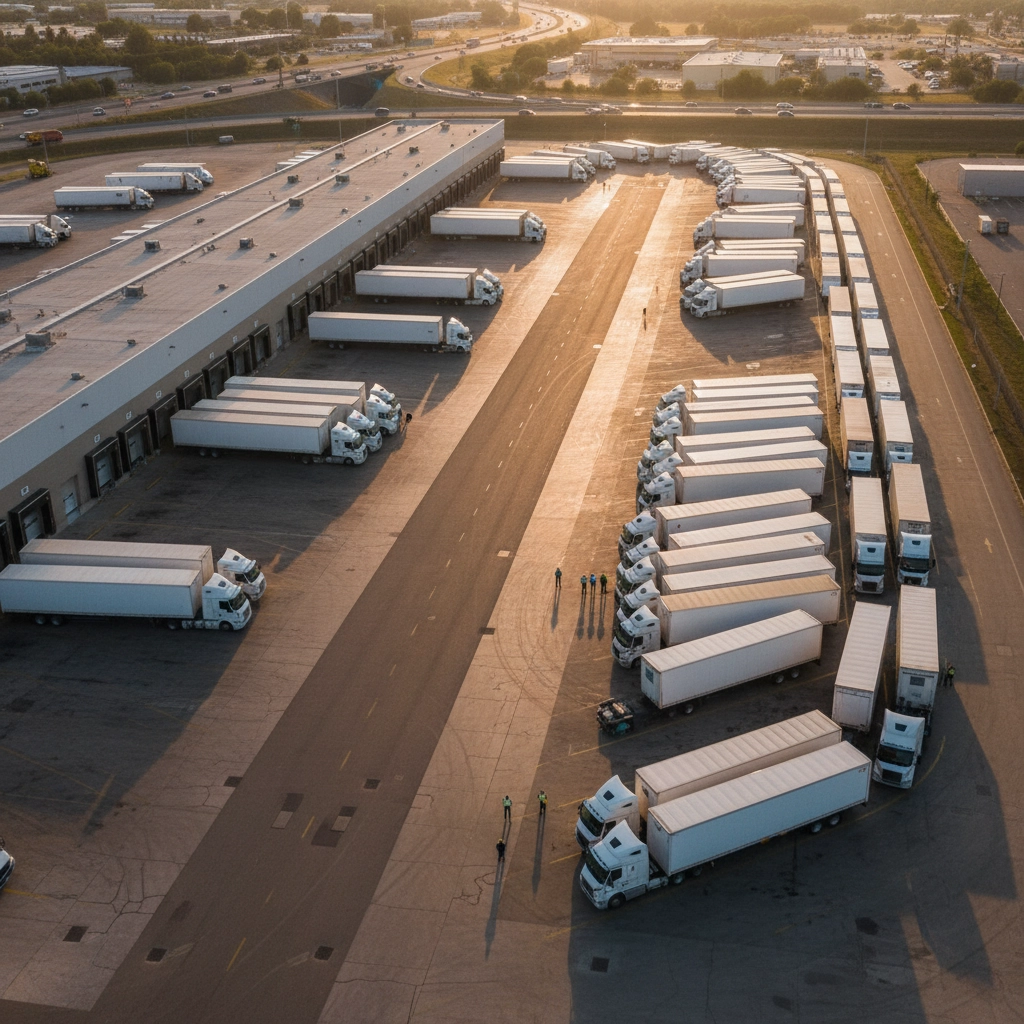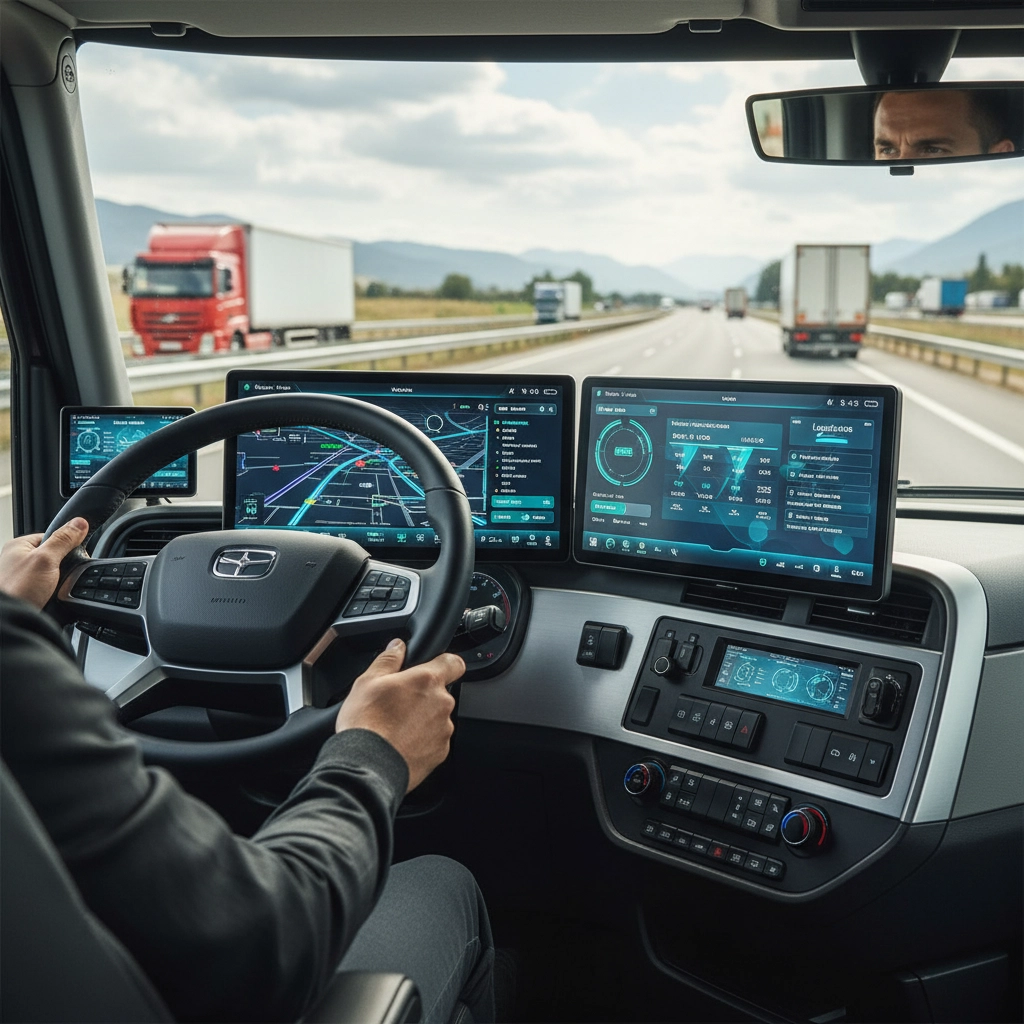Most trucking companies think traditional load matching still works fine… until they see their competitors cutting costs by 25% and eliminating empty miles with AI.
The freight industry is experiencing a technological revolution that's making old-school load boards and manual matching look like fax machines in the smartphone era. While traditional systems aren't technically "dead," they're rapidly becoming as outdated as paper maps in a GPS world.
The Million-Dollar Problem Traditional Systems Can't Solve
Every day, thousands of trucks drive empty while shippers desperately search for available capacity. This isn't just inefficiency: it's bleeding money across the entire supply chain.
Traditional load matching relies on fragmented, disconnected channels. Brokers juggle multiple load boards, endless phone calls, and email chains just to find suitable matches. Meanwhile, carriers constantly monitor various sources, often missing profitable opportunities while their trucks sit idle or run empty miles.

The numbers tell the story: empty miles cost the trucking industry over $87 billion annually. That's not a typo: billion with a "B." Traditional matching systems, with their manual processes and limited data integration, simply can't respond fast enough to prevent these wasteful trips.
How AI is Flipping the Script
Real-Time Intelligence That Actually Works
AI-powered systems don't just match loads: they think ahead. These platforms integrate GPS tracking, traffic patterns, weather forecasts, and historical data to create matches that maximize profitability while minimizing deadhead miles.
Here's what that looks like in practice: An AI system instantly evaluates truck specifications, weight limits, driver certifications, fuel efficiency, and delivery deadlines. It can match a refrigerated load with a properly equipped truck and certified driver: while simultaneously identifying the best backhaul opportunity for the return trip.
Companies using AI platforms like Loadsmart report cutting empty miles by over 20%. For a mid-sized carrier, that translates to hundreds of thousands in annual savings.
Predictive Analytics That Pay Off
Traditional systems are reactive: they respond to what's happening now. AI is proactive, predicting future demand patterns and optimizing routes before problems occur.
Machine learning algorithms analyze historical data including load patterns, seasonal fluctuations, and carrier preferences. Unlike rule-based systems that need manual updates, AI models continuously improve as new data emerges.

The Real-World Impact: Numbers Don't Lie
For Carriers:
- 15-30% increase in revenue per mile
- 20-25% reduction in empty miles
- 40% faster load matching
- Improved driver retention through better route optimization
For Shippers:
- 30% faster load fulfillment
- Reduced freight costs through better capacity utilization
- Real-time visibility and tracking
- Elimination of manual coordination bottlenecks
For Brokers:
- Automated matching reduces staff workload by 60%
- Improved customer satisfaction through faster service
- Better profit margins through optimized rate negotiations
Why Traditional Systems Haven't Disappeared (Yet)
Despite AI's clear advantages, traditional methods persist in certain segments. Some smaller operations lack the technical infrastructure for advanced AI integration. Others worry about upfront costs or face integration challenges with legacy systems.

Traditional systems still work for straightforward, predictable routes with established relationships. A small carrier running the same dedicated route daily might not need sophisticated AI matching.
But here's the reality: companies sticking with purely manual matching face mounting competitive pressure. They're losing rate negotiations, missing revenue opportunities, and struggling to retain drivers who want more efficient, profitable runs.
The Integration Challenge (And How Smart Companies Solve It)
The biggest barrier to AI adoption isn't cost: it's integration complexity. Many logistics companies operate on outdated infrastructure that doesn't play well with modern AI solutions.
Smart companies are taking a phased approach:
- Start with AI-powered load boards that integrate with existing systems
- Gradually add predictive analytics and route optimization
- Eventually migrate to fully integrated AI platforms
This staged approach minimizes disruption while delivering immediate benefits.
What the Future Looks Like
We're already seeing the next wave of innovation: AI systems that don't just match loads but optimize entire supply chains. These platforms consider fuel prices, driver hours of service, equipment maintenance schedules, and even customer payment histories when making matches.

The companies investing in AI now are building sustainable competitive advantages. They're not just cutting costs: they're delivering better service, retaining more drivers, and positioning themselves as preferred partners for major shippers.
The Bottom Line: Adapt or Get Left Behind
Traditional load matching systems aren't dead, but they're on life support. The question isn't whether AI will dominate freight matching: it's how quickly companies can adapt before their competitors gain an insurmountable advantage.
The math is simple: carriers using AI are more profitable, shippers get better service, and drivers earn more per mile. Companies still relying on manual processes are fighting tomorrow's battles with yesterday's tools.
Ready to discover how AI can transform your freight operations? The future of load matching is here: and it's more profitable than you think.
Contact GoTrucking.News:
📧 info@GoTrucking.News
📞 +1 970-671-7787
Follow us for the latest trucking industry insights:
LinkedIn | Facebook | Instagram | X (Twitter)
Trending Hashtags: #AILogistics #LoadMatching #TruckingTech #FreightInnovation #SupplyChainAI #TruckingEfficiency #LogisticsTechnology #FreightMatching
Keywords: AI load matching, traditional freight systems, trucking technology, logistics automation, freight efficiency, empty miles reduction
Ready to stay ahead of trucking industry trends? Visit GoTrucking.News for daily insights that keep you competitive!


